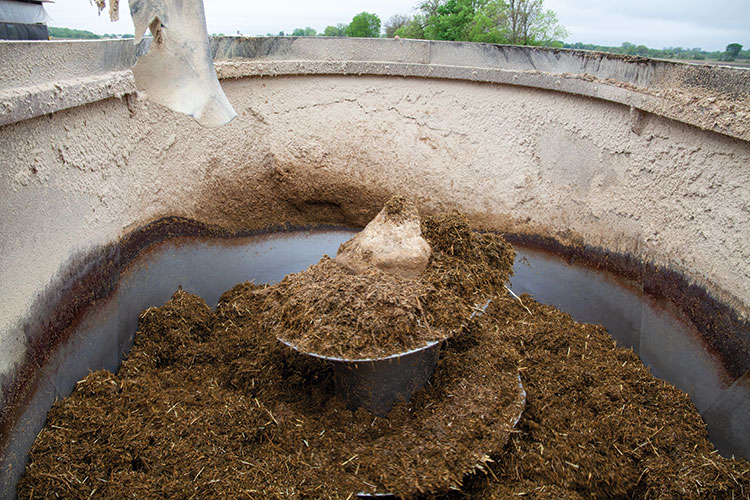
Everyone is finally in or near the full swing of the 2020 hay season. Some of us in the South are working on the second cutting of spring annuals, and the fertilizer trucks are running hard in the North. For the most part, the winter was not as cold nor as snowy as years past for most of the country. This made life a little easier for livestock producers. Hopefully, we don’t have to pay the price this spring and summer. Undesirable weather events always seem to bring with them challenges in getting livestock fed properly.
The cattle-feeding market has changed tremendously in the last decade or so, and how we feed them has changed, too. I’m not just talking about the feed rations and what they are comprised of, but also the mixer that the total mixed ration (TMR) is formulated with.
It wasn’t that long ago when reel and auger mixers were all you could find. They did, and still do, an awesome job getting a consistent mix of the feed, and they still are the best bet for small batch mixes.
When vertical mixers first came to the market, it wasn’t always “love at first sight.” Not all farmers are comfortable with change. Eventually, every sector of the livestock industry would come around to their versatility, convenience, and simplicity.
As with most equipment, the progression in manufacturing gets better with each new model change. One thing that put a bad taste in people’s mouths when vertical mixers first started being used heavily was their inability to process round or square bales in a timely manner. This was especially true for the smaller, single-screw models.
A new day for mixers
I do not believe this is a problem any longer, although some mixers still can take 20 to 30 minutes to process a bale of dry hay. I know there are single-screw mixers out there that can process a bale faster than a twin screw. I also know that there are still some nonbelievers among those who owned some of the first vertical mixers available.
The improvements that a few manufacturers have figured out when it comes to bale processing relates to the angle of the tub walls, the number of knives, and the speed of the auger. There are several mixer brands on the market that can process wet or dry hay bales in around 10 minutes. This is a huge improvement from the 30 minutes that other single- and twin-screw mixers can take.
It doesn’t even seem right that one auger can process faster than two, but if the angles on the tub wall and the angle of auger match the bale size, it can fall in between, and there are always knives in contact with the bale. Couple that with a higher speed auger, and you have some fast, efficiently processed hay.
With the twin-screw mixers, there can be a dead spot in between the two augers, which will slow down the mixing and processing. Even the same manufacturer can have faster processing with their single-auger mixer than their counterpart twin-screw model. One sure-fire method to shorten your grinding time is to invest in a baler with a precutter. These will cut a mixer’s processing time in about half and be easier on mixer knives.
There’s no longer a reason to be scared of a single-auger, vertical mixer anymore; there are several in the marketplace that can save you money in the purchase cost and also save time and money each day while you are mixing.
Here’s wishing you a great 2020 hay and forage season!
This article appeared in the April/May 2020 issue of Hay & Forage Grower on page 33.
Not a subscriber? Click to get the print magazine.

